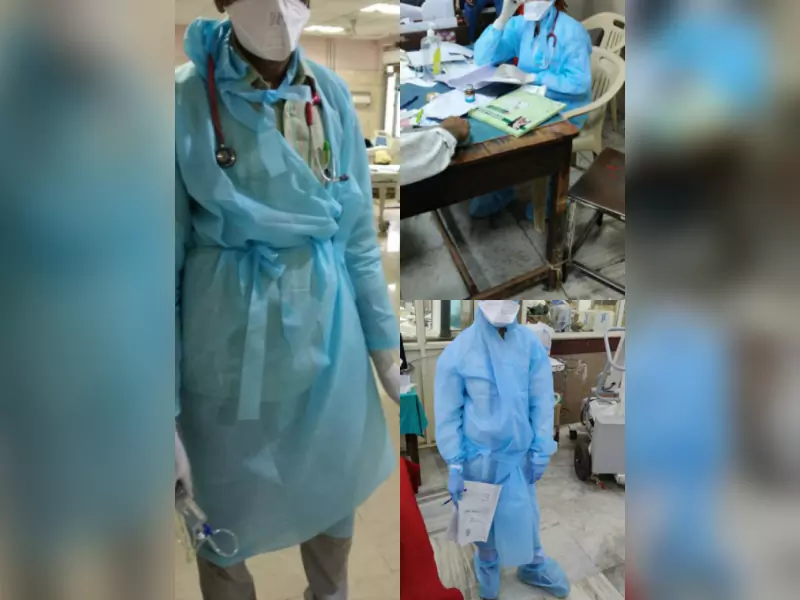Telangana junior docs treating COVID -19 patients lack quality PPE
By Aiswarya Sriram
Hyderabad: Healthcare workers in Telangana risk contracting COVID-19 courtesy the lack of personal protective equipment (PPE). The PPEs supplied by donors are also of poor quality, the doctors complain. Shortage of PPEs by the government has forced the junior doctors to depend on donations.
Speaking with NewsMeter, president of Telangana Junior Doctor’s Association, Kun Vishnu said, “The PPEs we have were given by donors. They were donated after knowing the plight of doctors. But few donors are unaware of the quality of PPE's to be used for COVID-19, so few donated to us are of low quality.”
According to guidelines issued by the Centre’s ministry of health and family welfare (MoHFW), the coverall or gown of PPE should meet or exceed ISO 16603 class 3 exposure pressure, or equivalent quality.
But Mr Vishnu says, the PPE that they are receiving are of class 1 quality. Explaining how the classification is done, he says, “There are three levels. The first level is of 40 gm per square meter thickness, used while treating HIV patients. The level two is of 70 gram per square meter thickness and level three is 180 gramper square meter. To treat COVID-19 patients the level 2 PPE is sufficient.”
As the doctors cannot change the PPE constantly, once worn they continuously work for almost 12 hours without going to washrooms and do not even eat food.
There is shortage of PPE’s in all government hospitals like TB and Chest Hospital, Osmania Hospital and Niloufer, said G. Srinivas, President of Resident Doctors Association. “Forget coveralls, even N95 masks are not being provided to many doctors citing shortage,” he added.
According to MoHFW guidelines, N95 or a three layered mask is compulsory for doctors treating COVID-19 patients or suspects.
“Currently the paper quality PPE, given in different hospitals in Hyderabad, do not provide us full coverage. The ones private hospitals are providing and those we are getting as donations at least cover our body completely,” Mr Srinivas said.
According to the World Health Organization (WHO) guidelines a gown or coverall should cover the doctor completely from head to toe. Once worn it shouldn’t be touched by the doctor, for any kind of adjustment.